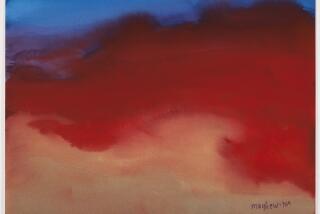Lovano and Rubalcaba Prove a Dynamic Duo
The trend toward minimalist--usually rhythm-section-free--instrumental jazz combinations continues in this brilliantly spontaneous new album. And it’s particularly intriguing to hear how the duo of piano and saxophone (explored in the last year or so by Branford Marsalis and his father, Ellis, and Wayne Shorter and Herbie Hancock) can produce so many distinctly different, yet equally creative results.
Lovano and Rubalcaba produced the music included here in a single, seven-hour studio session, “four hours waiting for the piano to be tuned,” says Lovano, “and three hours to play the music.” Every note reflects the sudden inspiration of gifted improvisers using their extensive skills to respond to each other creatively, freed of the limitations of contrivance and too-limiting structure.
Both players, in the past, have sometimes seemed restricted by overly framed musical settings. Hearing them in this kind of open setting is a revelation. Rubalcaba, always a virtuosic technician, reveals some of the tender intimacy at the heart of his playing, without sacrificing the fiery articulateness of his more aggressive inspiration. Lovano plays alto sax, alto clarinet, drums, gongs and an unusual, straight tenor saxophone (without a curved bell, says Lovano, the instrument makes “no resistance to the blowing, so you get dark tones and a deep rich bottom”), and finally emerges as a full-blown, innovative artist.
The eclectic set of music ranges from a perky, soprano sax/piano rendering of Ornette Coleman’s “Bird Food” and a tonally diverse (especially when Lovano blends gongs with his tenor saxophone) “Boss Town” to a gorgeously lyrical ballad (enriched by Lovano’s delicate touch) “I Love Music,” an avant-garde sounding “Mr. Hyde” and a hard-driving romp through Benny Golson’s “Along Came Betty.” Each piece reveals yet another perspective on the talent of two extraordinary players, clearly inspired by the setting and by each other, creating some of the finest jazz of recent memory.
Albums are rated on a scale of one star (poor) to four stars (excellent).
More to Read
The biggest entertainment stories
Get our big stories about Hollywood, film, television, music, arts, culture and more right in your inbox as soon as they publish.
You may occasionally receive promotional content from the Los Angeles Times.







